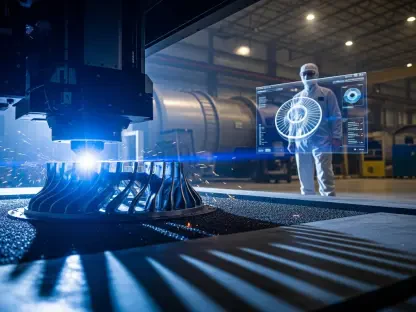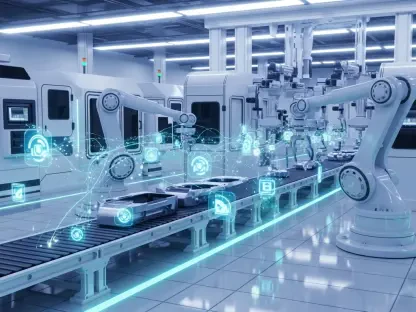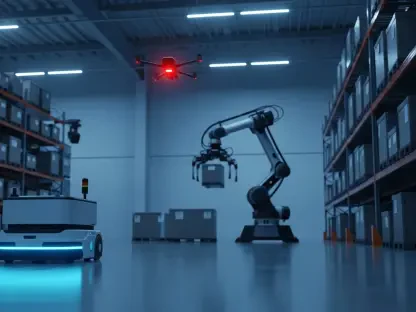I’m thrilled to sit down with Kwame Zaire, a renowned manufacturing expert with a deep focus on electronics, equipment, and production management. With his extensive experience in predictive maintenance, quality, and safety, Kwame offers unique insights into the evolving landscape of automotive technology and semiconductor supply chains. Today, we’ll dive into the innovative strategies behind initiatives like Auto Semicon Korea (ASK), exploring how industry leaders are addressing global chip shortages, fostering domestic ecosystems, and preparing for the future of mobility tech. Our conversation will touch on the challenges of supply chain resilience, the integration of diverse industries into automotive chip production, and the push to meet rigorous safety standards while accelerating development timelines.
Can you walk us through the driving forces behind initiatives like Auto Semicon Korea (ASK) and what challenges in the global semiconductor supply chain they aim to address?
Absolutely, Joshua. The global semiconductor shortage has been a wake-up call for the automotive industry, exposing vulnerabilities in relying heavily on foreign supply chains. Disruptions, whether from geopolitical tensions or production bottlenecks in key regions, have stalled vehicle manufacturing worldwide. Initiatives like ASK are born out of the need to create a more resilient, localized supply chain. The idea is to reduce dependency on imported chips by fostering a domestic ecosystem that can handle everything from design to production. It’s about securing stability and ensuring that supply disruptions don’t bring an entire industry to a halt.
How does a program like ASK work toward building a self-sustaining domestic value chain, and what does that concept mean in practical terms for the automotive sector?
Building a self-sustaining domestic value chain means creating a network where every step—chip design, fabrication, testing, and integration into vehicles—can happen within a single country or region. Practically, for the automotive sector, this translates to shorter lead times, better coordination on specs, and a reduced risk of external shocks. It’s about having local fabless firms, foundries, and automakers working in sync, speaking the same technical language, and aligning on timelines. The goal is to ensure that if global supply lines falter, domestic production can keep the wheels turning—literally.
What role do you see major players, who are both semiconductor developers and suppliers, playing in connecting the upstream and downstream parts of the chip supply chain?
Major players in this space act as crucial bridges. On the upstream side, they’re working with chip designers and foundries to develop automotive-grade semiconductors, ensuring the tech meets specific needs like durability and real-time performance. Downstream, they interface with vehicle manufacturers, translating those technical capabilities into practical applications for cars. Their dual role allows them to streamline communication, reduce mismatches in expectations, and ensure that what’s designed actually works in a vehicle environment. It’s a unique position that helps eliminate silos and drives efficiency across the chain.
Why is it important to bring companies from outside the automotive sector, such as those in home appliances or mobile tech, into the mobility space, and how can they be supported in this transition?
Bringing in companies from sectors like home appliances or mobile tech is vital because they often have expertise in high-volume chip production and innovative design that the automotive industry can leverage. Their experience can help scale production and introduce fresh perspectives on miniaturization or power efficiency. However, automotive standards are far stricter, especially around safety and reliability. Support comes in the form of knowledge transfer—sharing protocols, testing frameworks, and even joint development projects. Incentives like funding or access to testing facilities can also ease their entry, helping them adapt their tech to meet the rigorous demands of mobility applications.
How can the industry tackle the notoriously long development cycles for automotive chips, particularly for critical systems like electric drive technologies?
Long development cycles are a real pain point, often stretching over years due to the complexity and safety requirements of automotive chips. One effective approach is integrated development, where chip design and controller systems are worked on simultaneously rather than sequentially. This cuts down on back-and-forth revisions. For electric drive systems, focusing on real-vehicle validation early in the process can also shave off significant time—sometimes up to two years. It’s about aligning teams, using simulation tools, and prioritizing end-to-end collaboration to move from concept to production much faster.
What kinds of semiconductor technologies are currently in focus for automotive applications, and how do they support trends like electrification and digitalization?
Right now, the focus is on a wide range of chips—think power management for electric vehicles, data processing for advanced driver assistance systems, and connectivity chips for infotainment and vehicle-to-everything communication. These technologies are the backbone of electrification, ensuring efficient battery usage and motor control. For digitalization, they enable features like over-the-air updates and autonomous driving capabilities. Each type addresses a specific need, but together, they’re transforming vehicles into smart, energy-efficient platforms that meet modern consumer and regulatory demands.
How critical is adhering to international safety standards like ISO 26262 in the development of automotive chips, and what impact does this have on industry collaboration?
Adhering to standards like ISO 26262 is non-negotiable. It’s the benchmark for functional safety in road vehicles, ensuring that electronic systems won’t fail in ways that endanger lives. Certification to this standard builds trust—both with regulators and partners. When a company shares its safety protocols or validation processes, it lowers the learning curve for new entrants, especially those transitioning from consumer electronics. Collaboration becomes smoother because everyone’s working from a proven playbook, reducing risks and fostering confidence in joint projects. It’s a cornerstone of building a reliable supply ecosystem.
Looking ahead to the projected growth of the automotive semiconductor market to $135 billion by 2030, how should companies position themselves to capture a significant share of this opportunity?
The projected growth to $135 billion is staggering, driven by electrification, autonomy, and connectivity. Companies need to position themselves by focusing on niche strengths—whether that’s power chips for EVs or sensors for autonomous systems—and scaling up domestic production capacity. Strategic partnerships are key; no one can do this alone. Investing in R&D to stay ahead of tech curves and aligning with initiatives that bolster local supply chains will also be critical. It’s about being proactive, not reactive, and ensuring you’re part of the ecosystem that’s ready to meet 70% of that market demand through focused segments.
What is your forecast for the future of automotive semiconductor supply chains over the next decade?
I see the next decade as a transformative period for automotive semiconductor supply chains. We’ll likely witness a shift toward greater regionalization, with countries prioritizing domestic or nearshore production to mitigate risks seen in recent years. Technology will play a huge role—think AI-driven supply chain optimization and advanced manufacturing techniques to boost yield and efficiency. Collaboration across industries will deepen, blurring lines between automotive and consumer tech. Ultimately, I believe we’ll move closer to a model where resilience and agility define supply chains, ensuring that the industry can keep pace with the rapid evolution of mobility tech.









